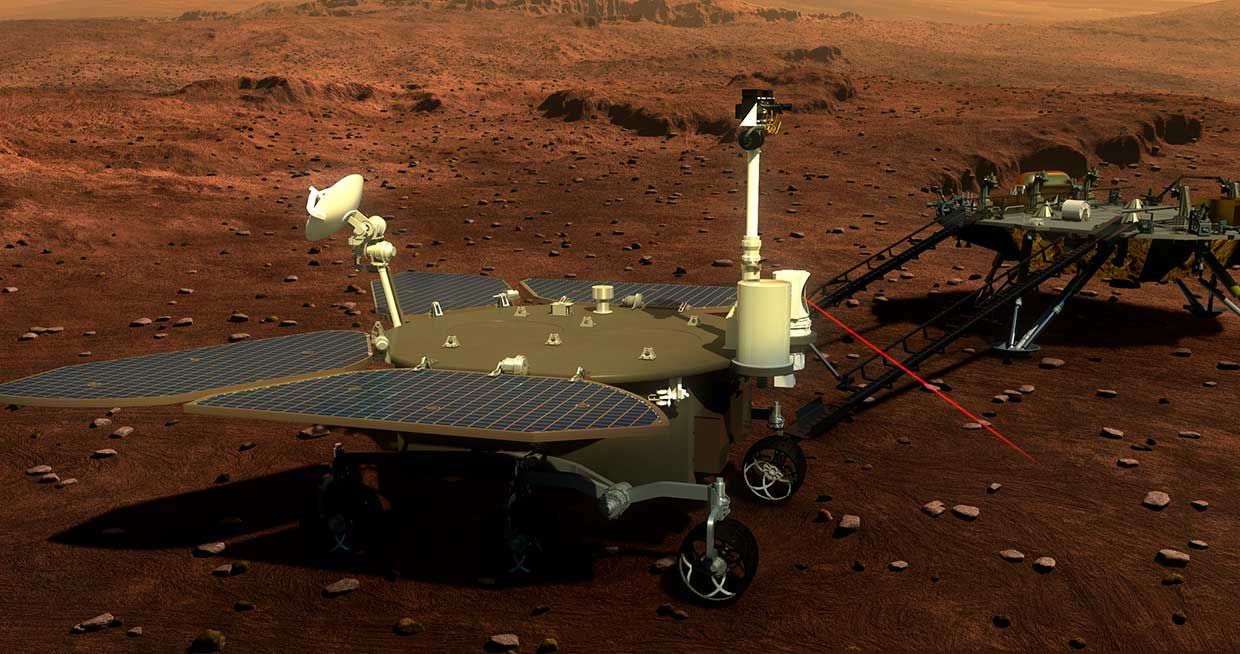China Becomes Third Nation to Successfully Land Rover on Mars
Early Saturday morning (Beijing time), China's Tianwen-1 lander separated from its orbiter and successfully performed a fully autonomous powered descent to the Martian surface, carrying the Zhurong rover along with it. The landing site is Utopia Planitia, past site of the Viking 2 lander and future site of a major Starfleet shipyard.
 CNSA
CNSA The China National Space Administration (CNSA) is not nearly as open about what it's doing as NASA is and the descent and landing were not shown live. The landing itself was a technique that we're fairly familiar with, although just because similar systems have been used in the past doesn't make it any less impressive. The difference was that the Tianwen-1 spacecraft was orbiting Mars rather than skimming past it, making the entry velocity a mere 4 km/s rather than the 5.5 km/s experienced by Perseverance.
A bit of a bump at the end there, right? But there's another video showing a much gentler landing, albeit with what looks like some kind of antigravity laser force field, although it could also be a representation of the lander's obstacle-avoidance system.
We have yet to see any pictures from the surface, and the Zhurong rover is still perched on top of the descent stage-its wheels probably won't touch the surface until next week, after the deployment of some little ramps, one for each set of wheels. Once safely down, the 240 kg solar-powered rover will begin its 90-day science mission, the most interesting aspect of which could be its search for subsurface water ice.
One of the instruments that Zhurong carries is RoPeR, which is a dual-frequency ground-penetrating radar system. It can look for ice layers up to 100m beneath the surface, which is a unique capability and could provide some additional information about where on Mars might be suitable for base. Ice means water, and water means both something to breathe and something to fuel rockets with. This stuff is necessary for exploration, since trying to haul these resources to Mars from Earth is almost certainly not practical.
How much CNSA decides to share about Zhurong's adventures going forward is anyone's guess. NASA's policy (with a few exceptions) is to post raw images from its spacecraft almost as soon as they're received, but with Zhurong, it seems like we'll have to just content ourselves with whatever CNSA wants us to see. Even so, it's hard not to get excited for a little robot that's about to start exploring a brand new piece of Mars for the very first time.